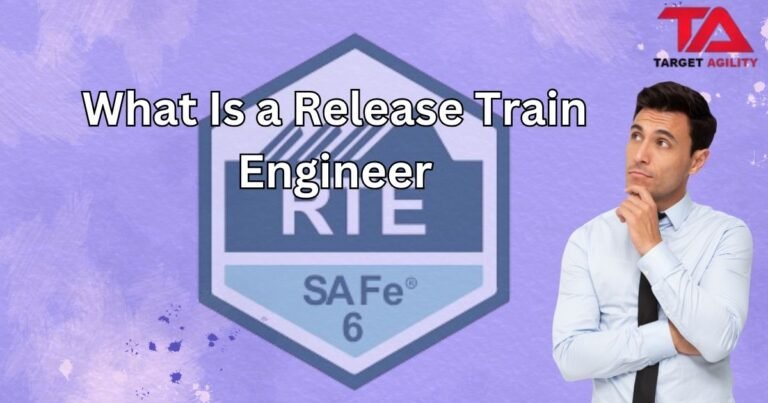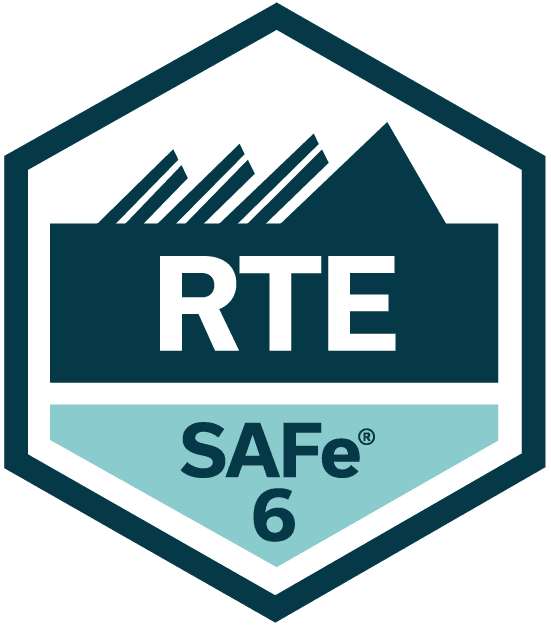A Release Train Engineer (RTE) plays a key role in Agile frameworks, particularly in the Scaled Agile Framework (SAFe). The RTE is like the head Scrum Master, overseeing a group of teams called the Agile Release Train (ART), which work together to deliver value consistently. The RTE’s job is to ensure that everything runs smoothly, teams stay aligned, and they meet the organization’s goals. In this blog, we’ll break down the RTE’s roles, responsibilities, and the skills they need.
What Does a Release Train Engineer Do?
The main job of an RTE is to make sure the Agile Release Train (ART) runs effectively. This involves helping teams stay in sync, solving issues, managing risks, and promoting collaboration. Here are some important tasks RTEs handle:
- Facilitator: The RTE helps organize key Agile events like Program Increment (PI) Planning, daily standups, and retrospectives, ensuring everything runs smoothly.
- Servant Leader: Like a Scrum Master, the RTE supports the teams rather than giving direct orders, empowering them to succeed by removing obstacles.
- Communicator: The RTE ensures clear communication between teams and higher management, keeping everyone on the same page and aligned with the company’s goals.
- Coach: The RTE coaches the teams on Agile practices, helping them grow and mature in their understanding and use of Agile methodologies.
- Process Overseer: The RTE makes sure the ART follows Agile and SAFe principles and processes, ensuring high standards and keeping things lean.
Responsibilities of a Release Train Engineer
An RTE’s responsibilities cover both the day-to-day operations of the Agile Release Train and the overall success of the program. Key responsibilities include:
- Running PI Planning: The RTE organizes and leads Program Increment (PI) Planning, a key event where teams plan their work for the next 8-12 weeks.
- Managing Risks: The RTE identifies risks that might slow down progress and works to solve them before they become bigger problems.
- Tracking Progress: The RTE monitors key performance indicators like velocity and burn-down charts to ensure the teams are on track and performing well.
- Fostering Teamwork: The RTE ensures that all teams within the ART are working together and are aligned on their goals and timelines.
- Leading Agile Meetings: The RTE facilitates important Agile meetings like Scrum of Scrums, retrospectives, and Inspect and Adapt sessions, ensuring collaboration and continuous improvement.
- Driving Continuous Improvement: The RTE looks for ways to improve processes, reduce inefficiencies, and boost productivity and quality across the teams.
Skills Needed for a Release Train Engineer
An effective Release Train Engineer needs a combination of technical knowledge, leadership, and communication skills. Some of the essential skills include:
- Agile and SAFe Knowledge: A strong understanding of Agile practices and SAFe is essential for guiding teams and ensuring they stick to these frameworks.
- Facilitation Skills: RTEs must be able to lead large meetings and make sure everyone is engaged and on the same page.
- Problem Solving and Conflict Management: RTEs need to be great at solving problems and handling any conflicts that may arise between teams or individuals.
- Leadership and Coaching: The RTE acts as a servant leader, encouraging teams to take ownership of their work and providing guidance to improve their performance.
- Communication Skills: Clear and effective communication is key since the RTE connects teams and stakeholders, providing updates and addressing concerns.
- Project Management: While not a traditional project manager, the RTE still needs project management skills to help keep the ART on track and ensure goals are met.
Conclusion
The Release Train Engineer is essential to the success of the Agile Release Train in a SAFe setup. They ensure teams are aligned, risks are managed, and value is consistently delivered. Understanding the RTE’s roles, responsibilities, and necessary skills helps organizations run more efficient Agile processes and continuously improve their work.
“Ready to kickstart your RTE journey? Click here to begin your adventure!”










